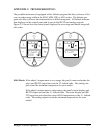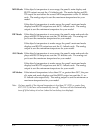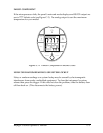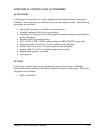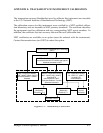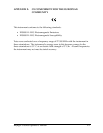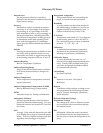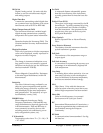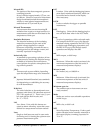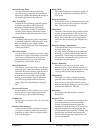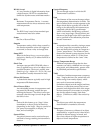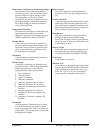
Glossary-6 Raynger 3i Series Operator's Manual
Temperature Coefficient (or Ambient Derating)
An indication of the instruments ability to
maintain accuracy when the ambient condi-
tions are subject to a slow change or drift.
The temperature coefficient is usually
expressed as the percent change in accuracy
per degree change in ambient temperature.
For a rapid change in ambient conditions
refer to Thermal Shock.
Temperature Resolution
The minimum simulated or actual change in
target temperature that gives a usable
change in output and/or indication (per the
ASTM standard test method E 1256-88).
Thermal Shock
A short term error in accuracy caused by a
transient ambient temperature change. The
instrument recovers from its accuracy error
when it comes back into equilibrium with
the new ambient conditions.
Thermistor
A semiconductor material whose resistivity
changes with temperature.
Thermocouple
A junction, comprising two dissimilar met-
als, that develops a small voltage dependent
upon the temperature of the junction.
Typical thermocouples types include:
J iron/constantan
K chromel/alumel
T copper/constantan
E chromel/constantan
R platinum/platinum-30% rhodium
S platinum/platinum-10% rhodium
B platinum-6% rhodium/platinum-30%
rhodium
G tungsten/tungsten-26% rhenium
C tungsten-5% rhenium/tungsten-26%
rhenium
D tungsten-3% rhenium/tungsten-25%
rhenium
Thermopile
An arrangement of thermocouples in series
such that the alternate junctions are at the
measuring temperature and at the reference
temperature. This arrangement increases the
thermoelectric voltage.
Time Constant
The time it takes for a sensing element to
respond to 63.2% of a step change at the tar-
get.
Transfer Standard
A precision radiometric measurement instru-
ment with NIST traceable calibration in the
USA (with other recognized standards avail-
able for international customers), used to cal-
ibrate radiation reference sources.
Transmittance
The ratio of IR radiant energy transmitted
through an object to the total IR energy
received by the object for any given spectral
range; the sum of emittance, reflectance, and
transmittance is unity.
Warm-Up Time
Time, after turn on, until the instrument will
function within specified repeatability (per
the ASTM standard test method E 1256-88).
Verification
Confirmation of accuracy.
Vibration Test
An oscillatory or repetitive motion test of the
instrument per MIL-STD-810D or IEC 68-2-6,
often specified as an acceleration in g’s (1g =
9.81m/s
2
= 32.2 ft./s
2
), over a frequency
range typically measured in Hertz (sec
-1
).



